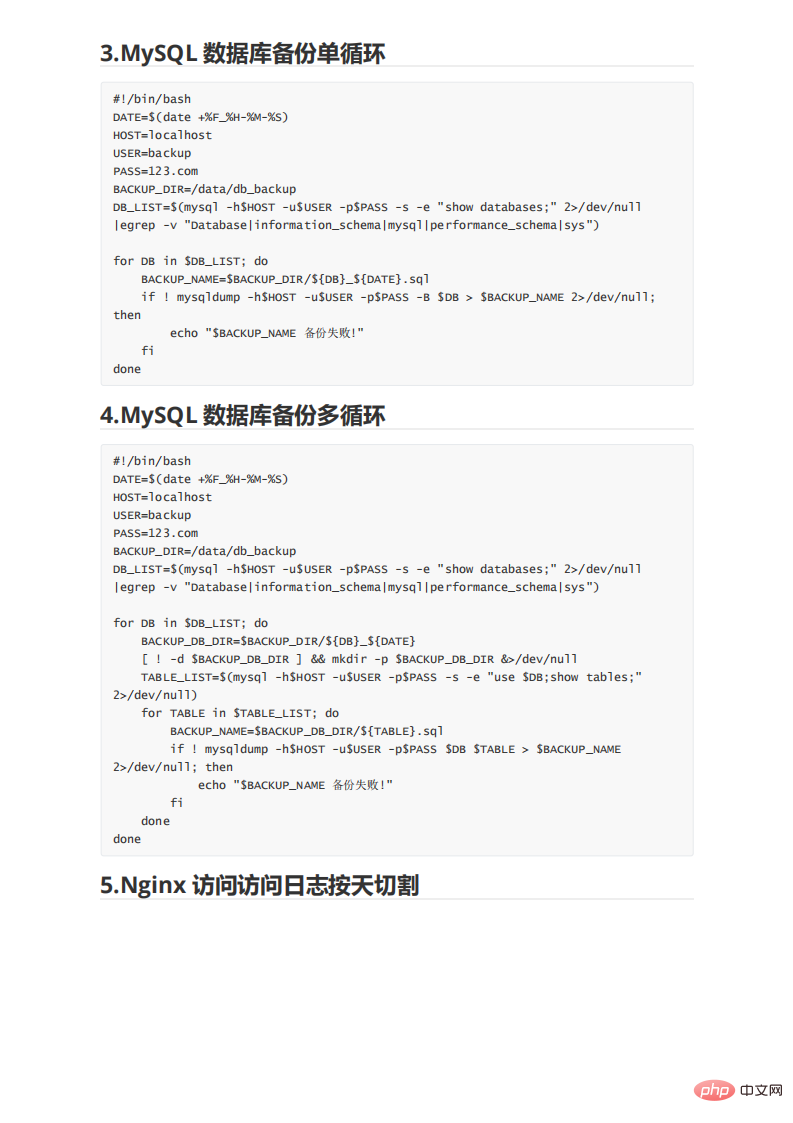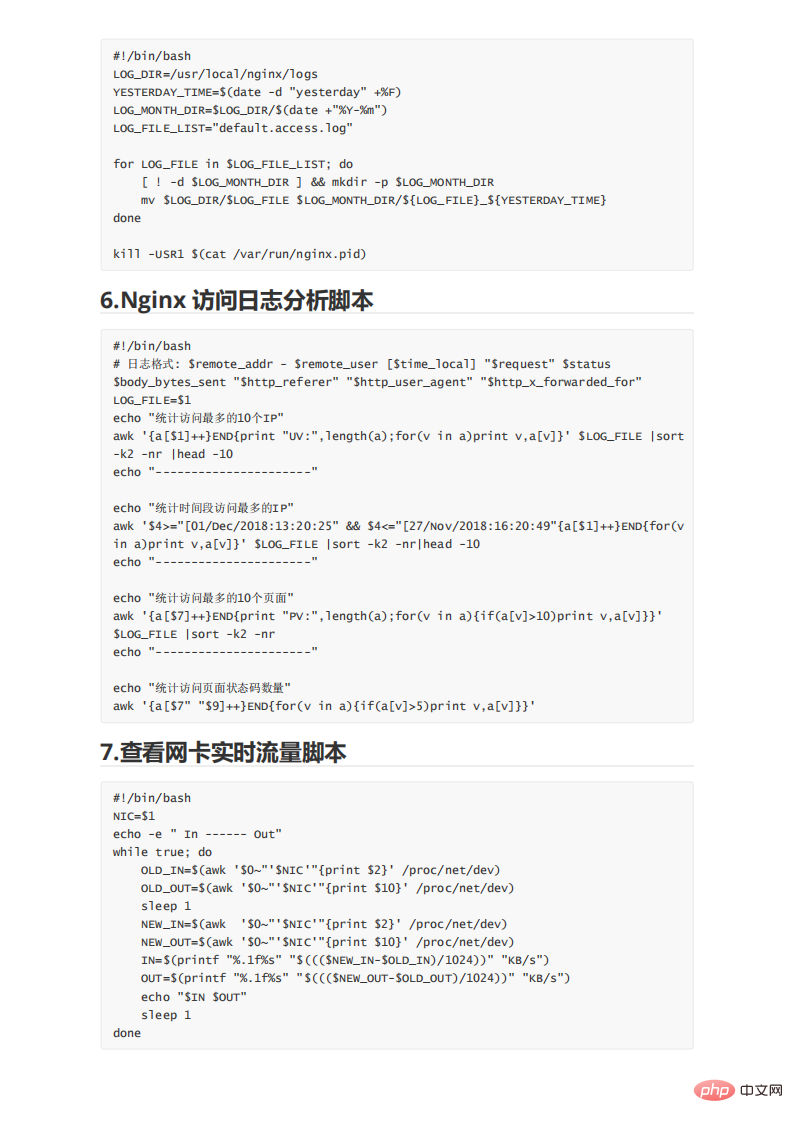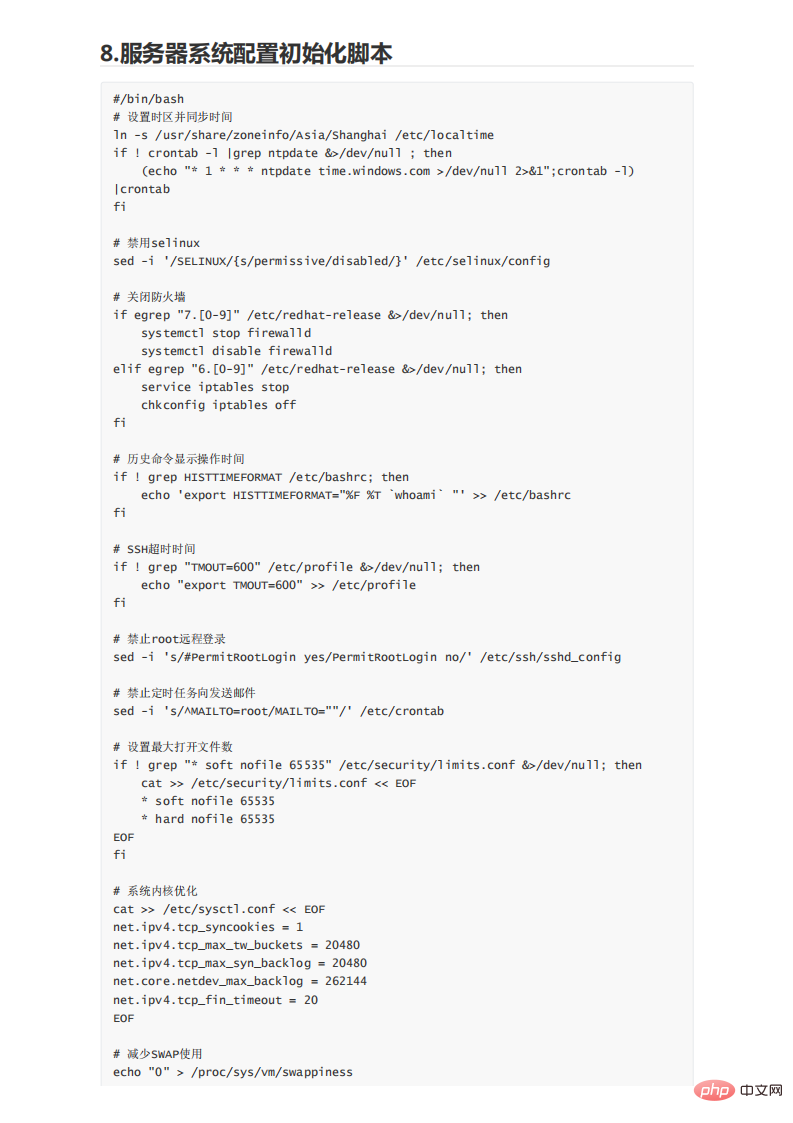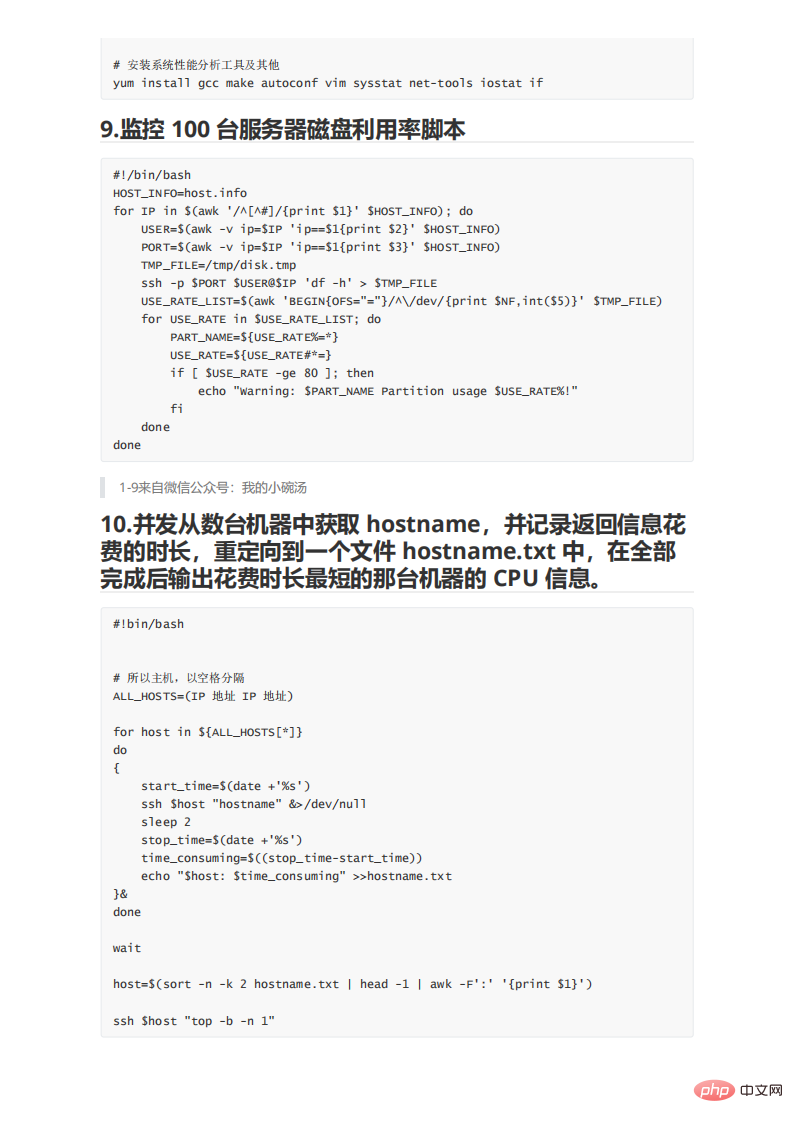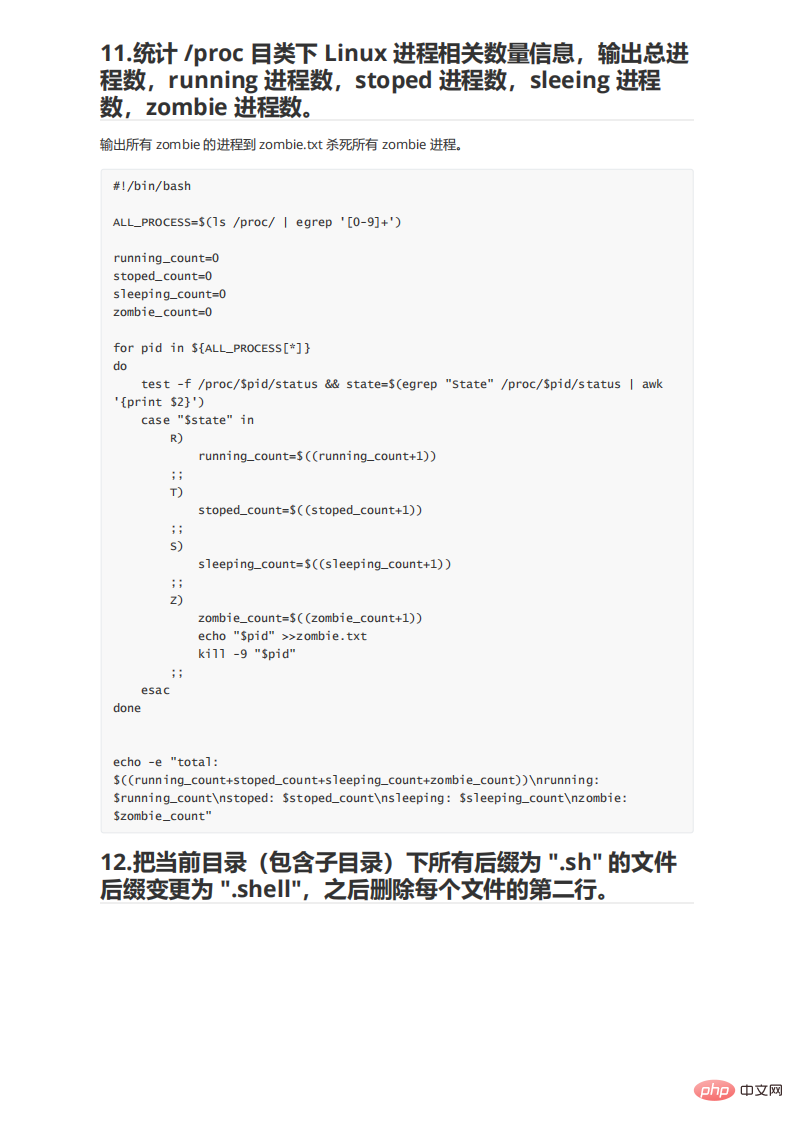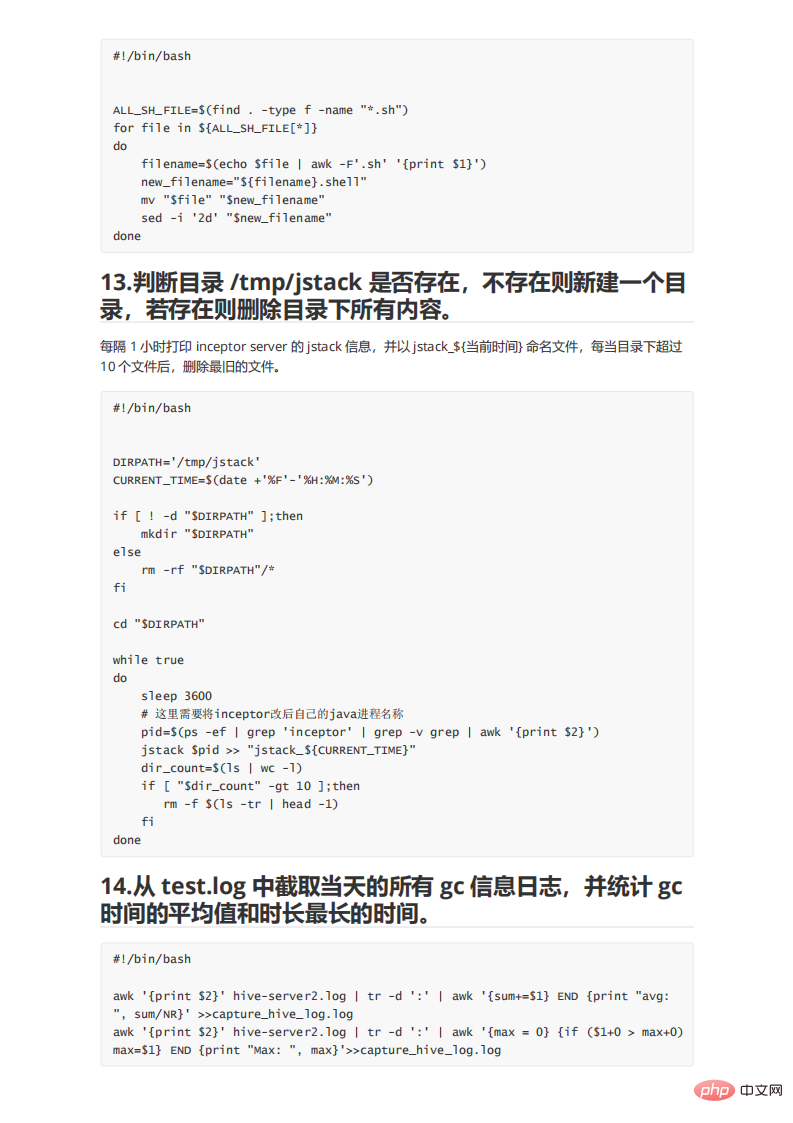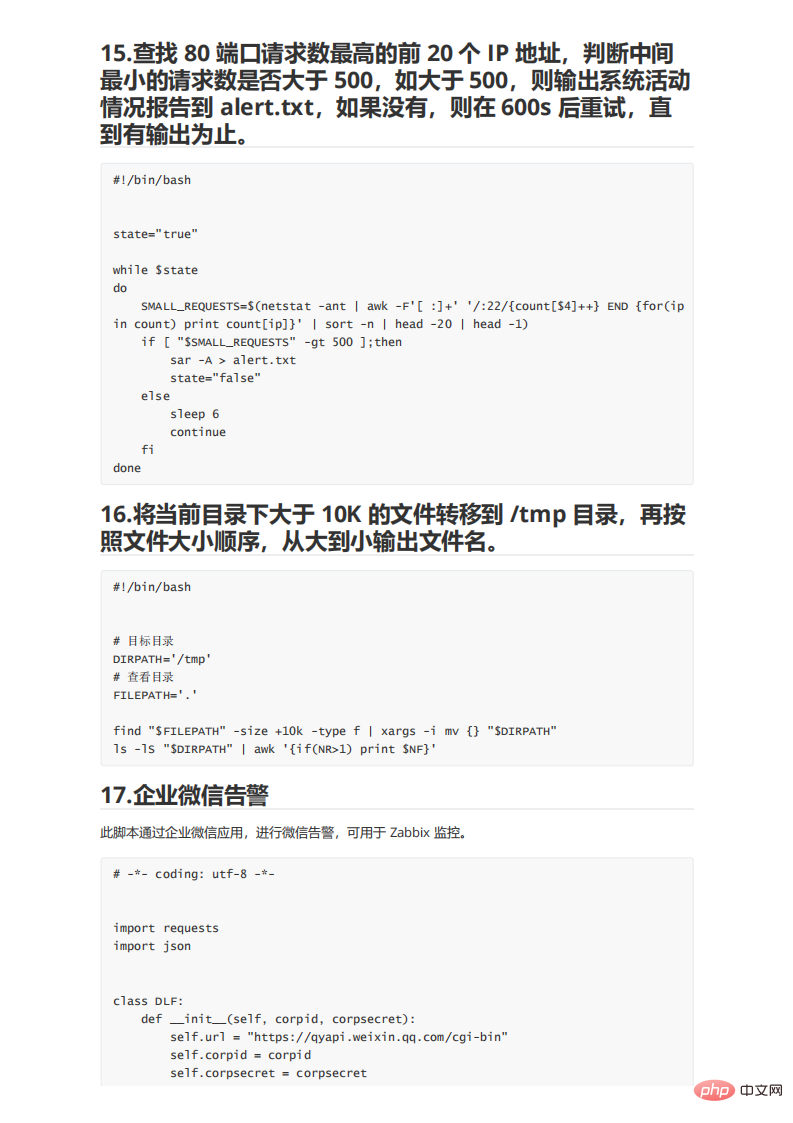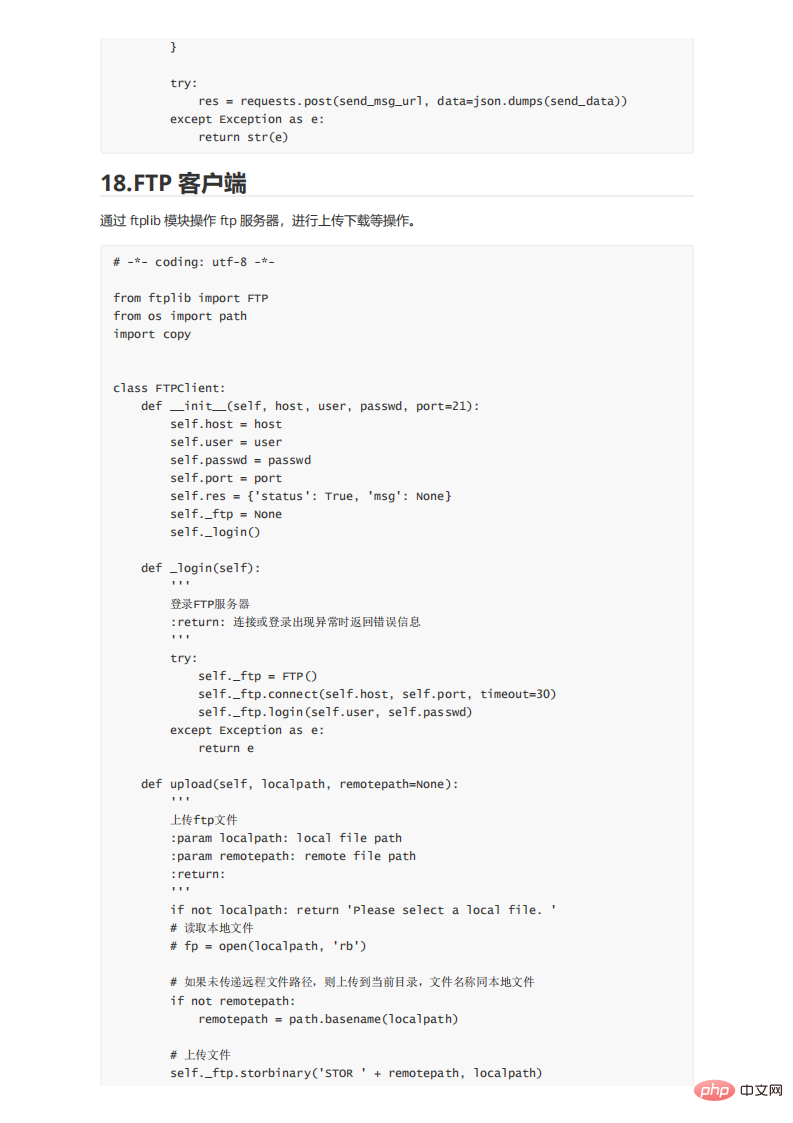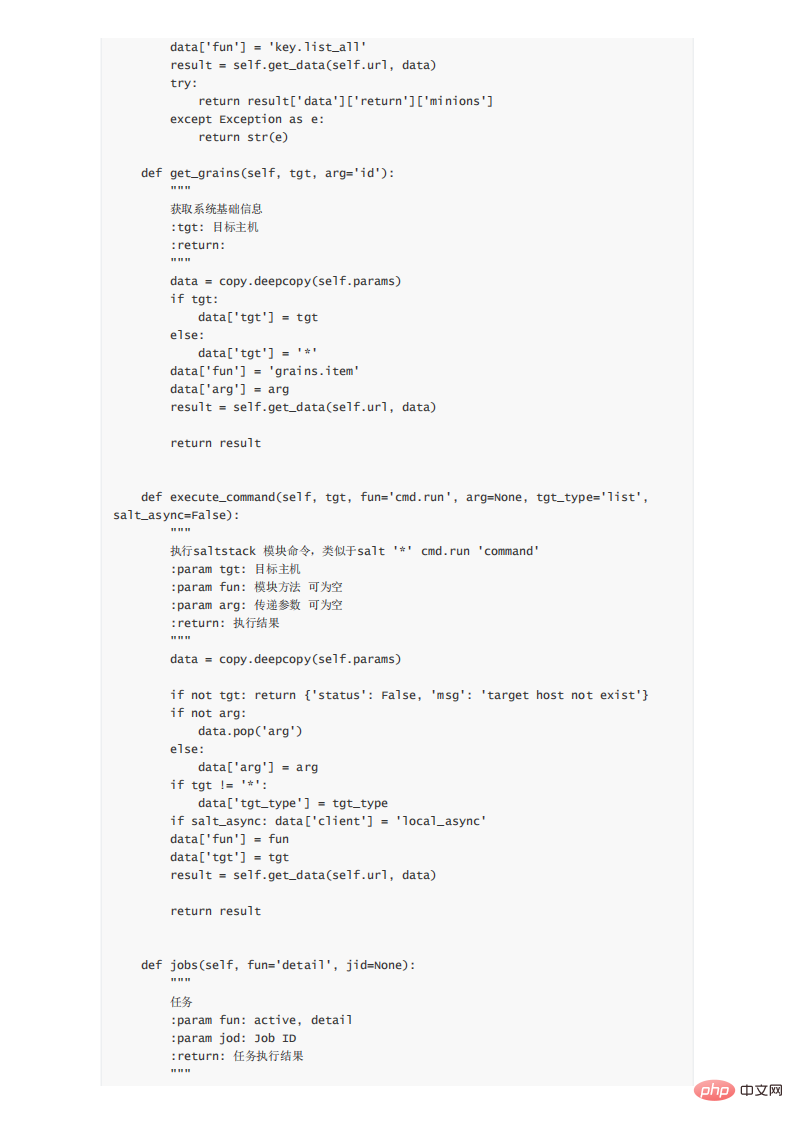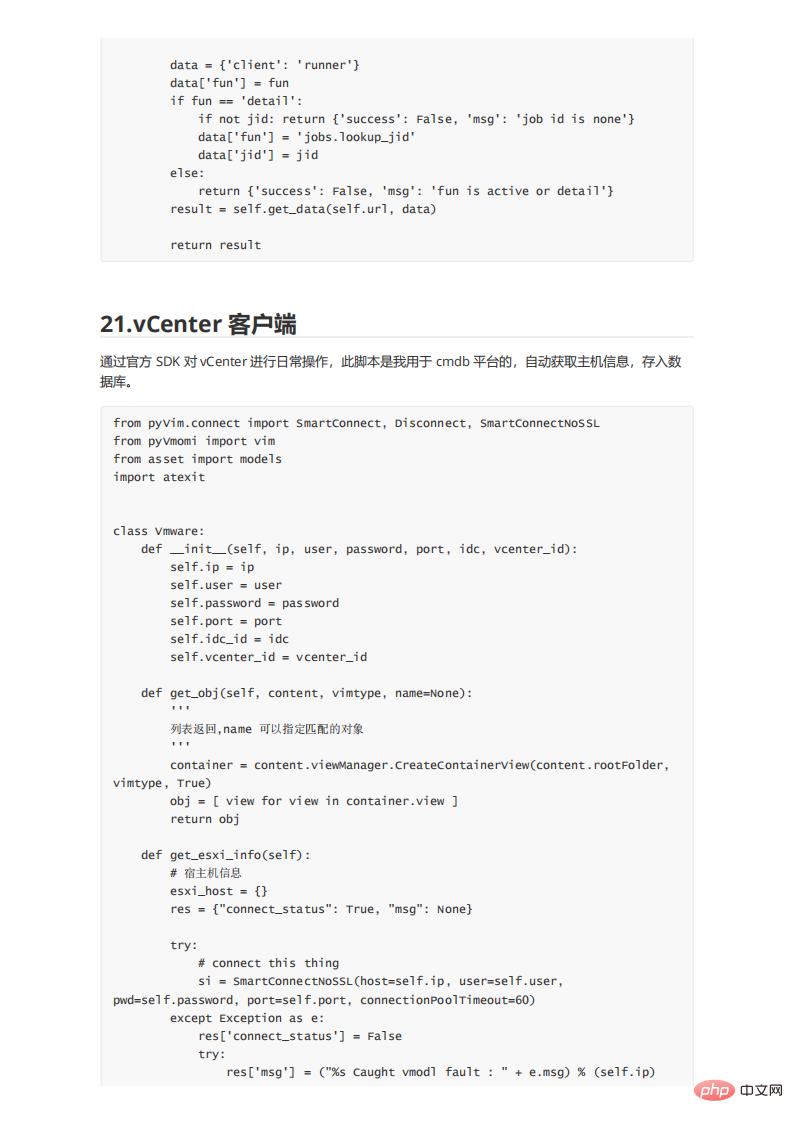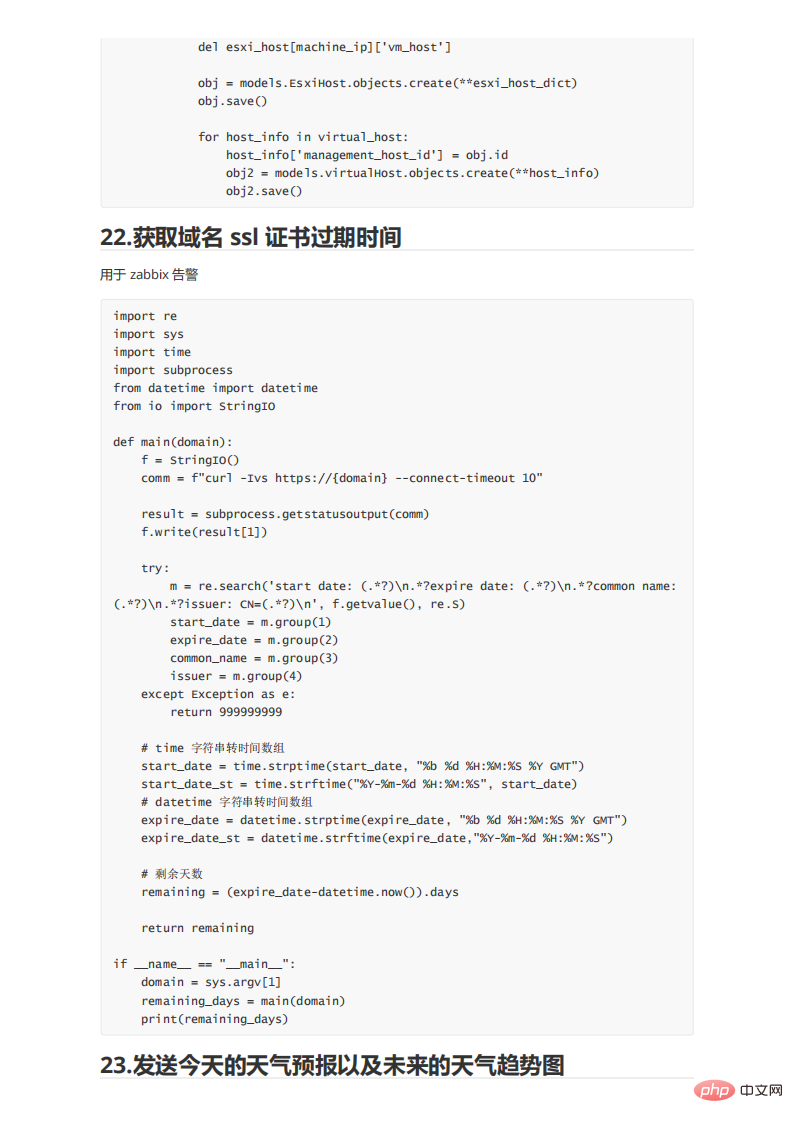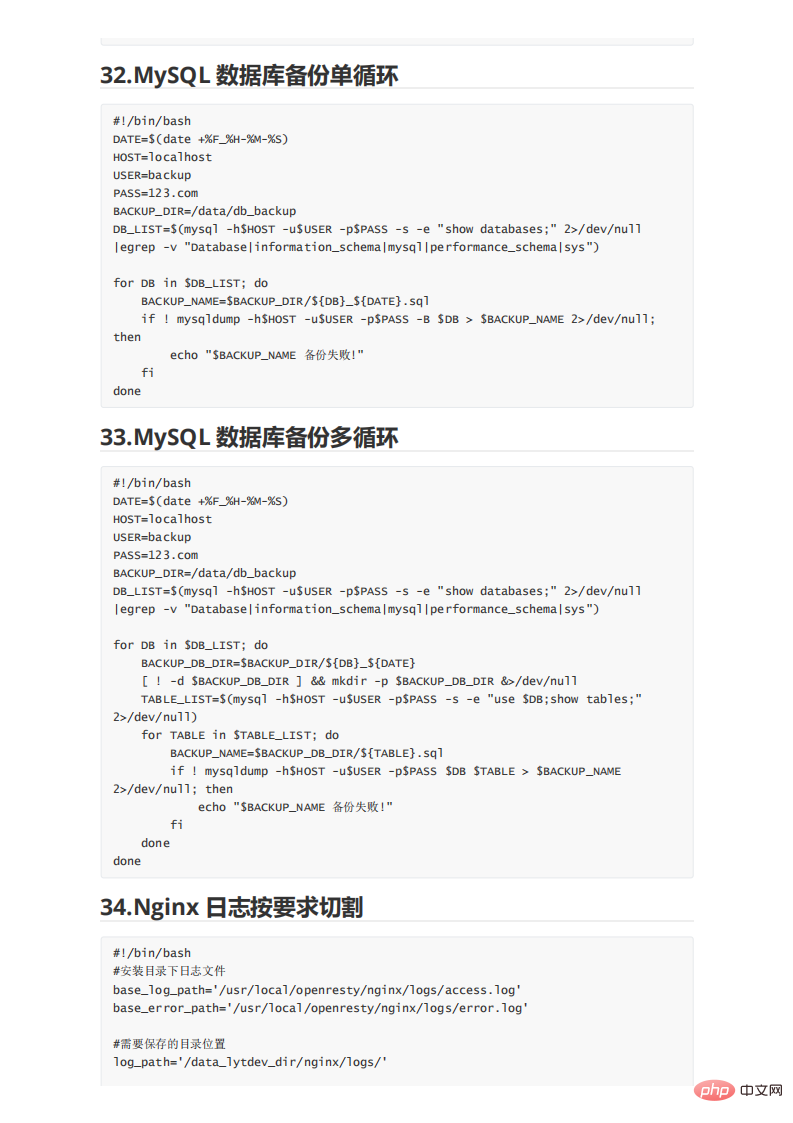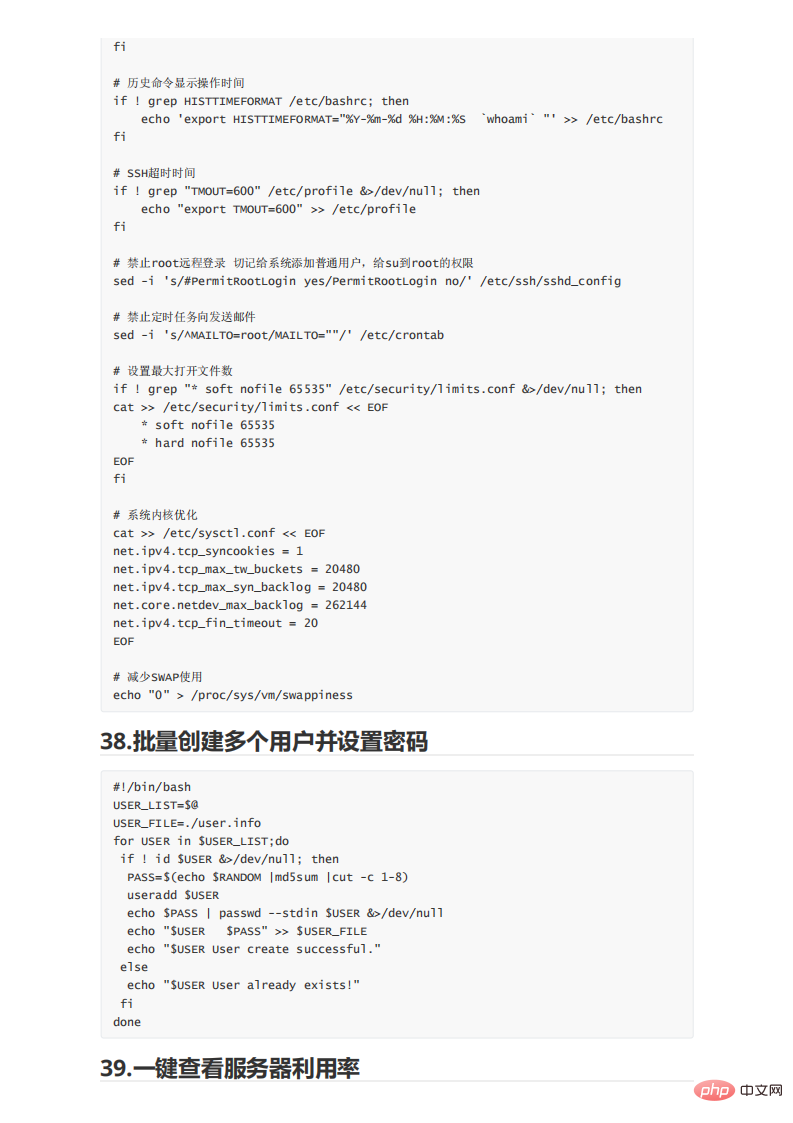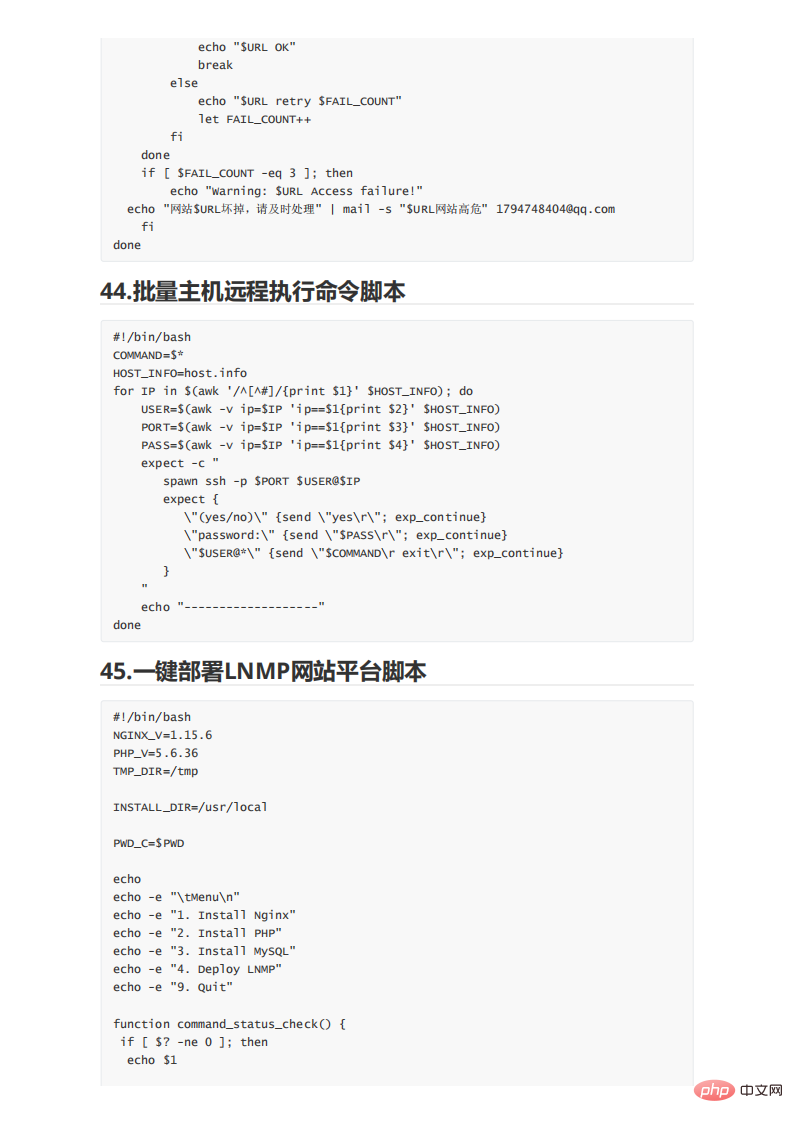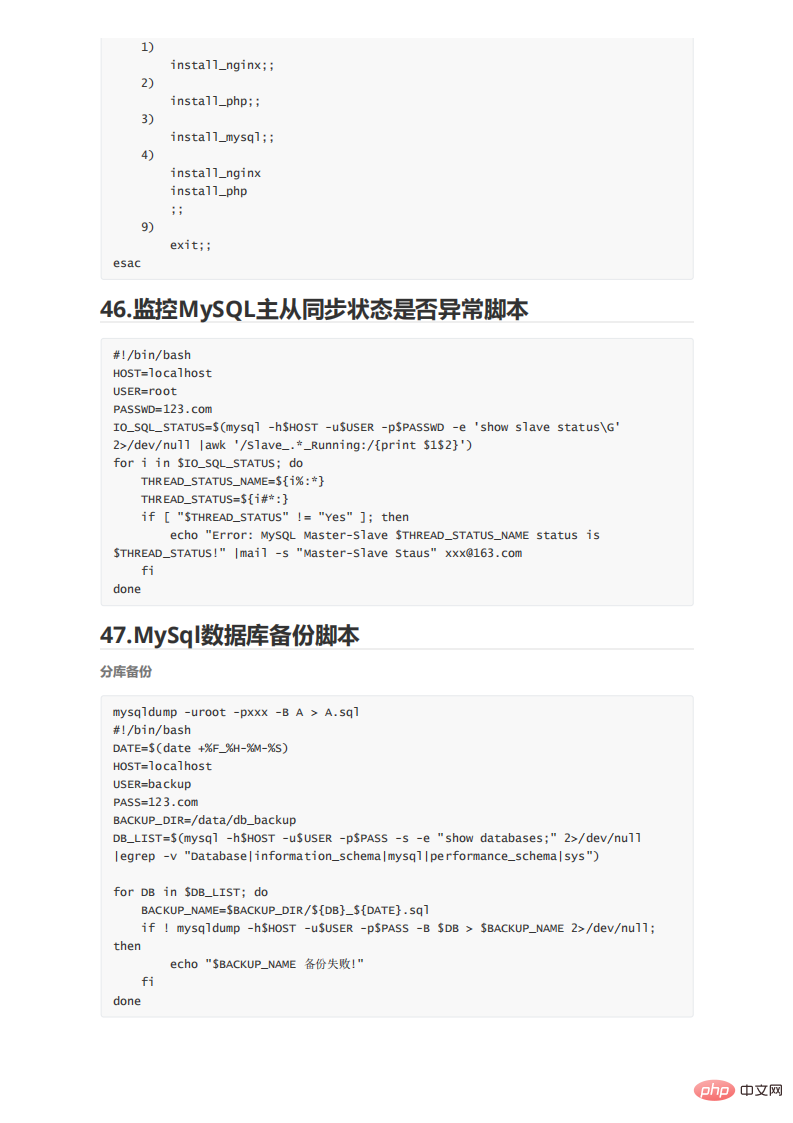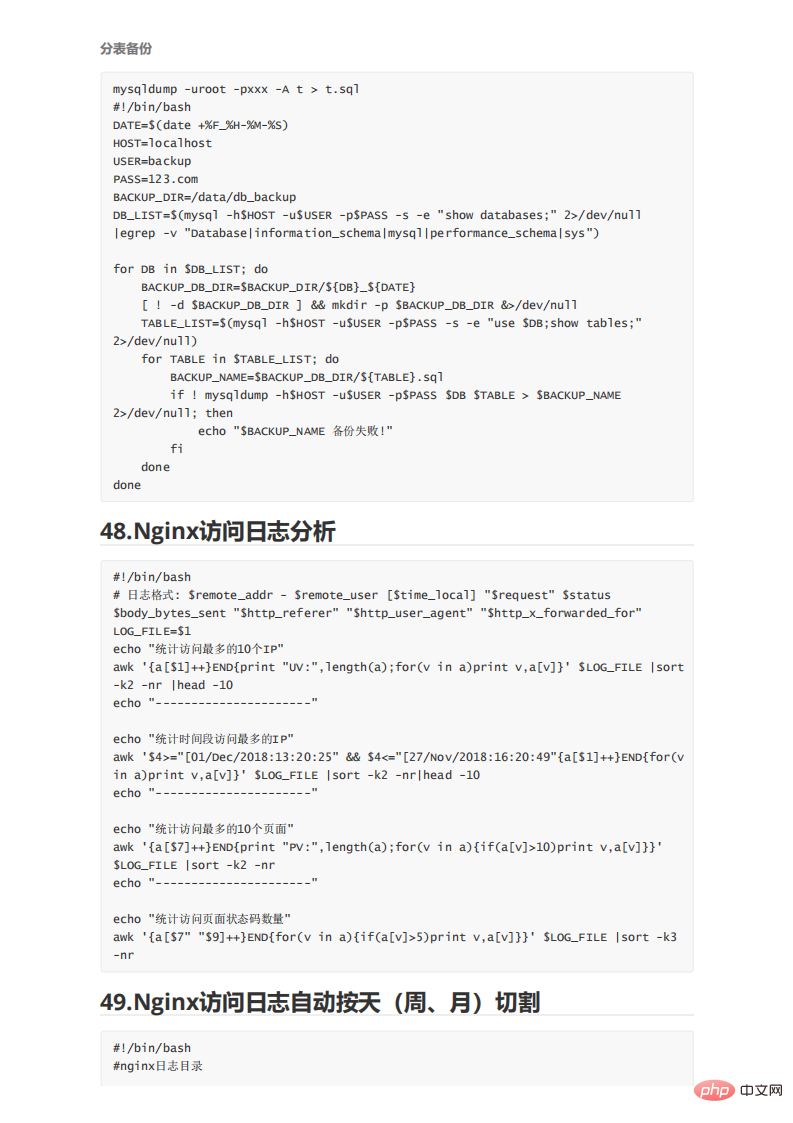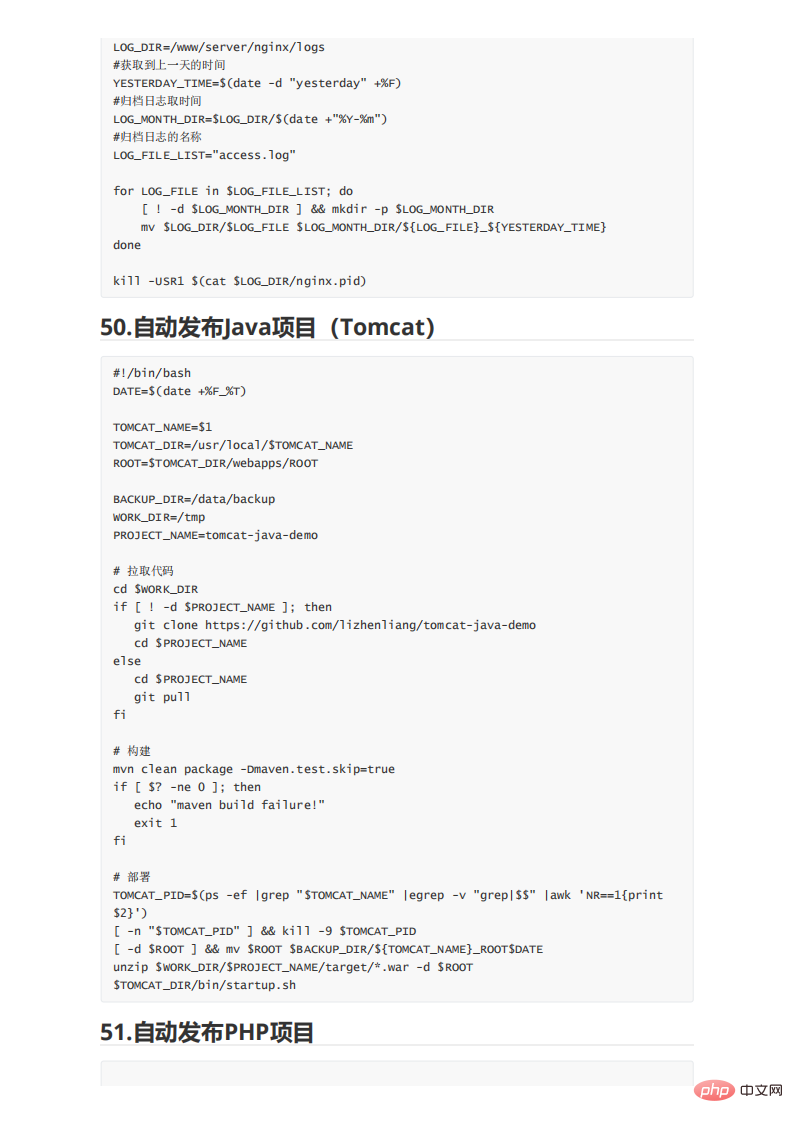 Operation and Maintenance
Operation and Maintenance
 Linux Operation and Maintenance
Linux Operation and Maintenance
 109 practical shell script examples, the code is clear and easy to use!
109 practical shell script examples, the code is clear and easy to use!
109 practical shell script examples, the code is clear and easy to use!
Shell script is to use the command interpretation function of Shell to parse a plain text file and then execute these functions. It can also be said that Shell script is a collection of a series of commands.
Shell can be used directly on win/Unix/Linux, and can call a large number of system internal functions to interpret and execute programs. If we are proficient in Shell scripts, we can operate the computer more easily. It’s easier and saves a lot of time.
This document compiles 109 shell scripts from the Internet. I hope it will be helpful to everyone. The code is clear and reproducible. The electronic version is conducive to everyone practicing at any time and improving practical capabilities. It is a masterpiece that integrates all the core knowledge points of Shell scripts. It is a perfect tool for learning, improving, and interviewing. The must-have products , I suggest you collect them and save them.
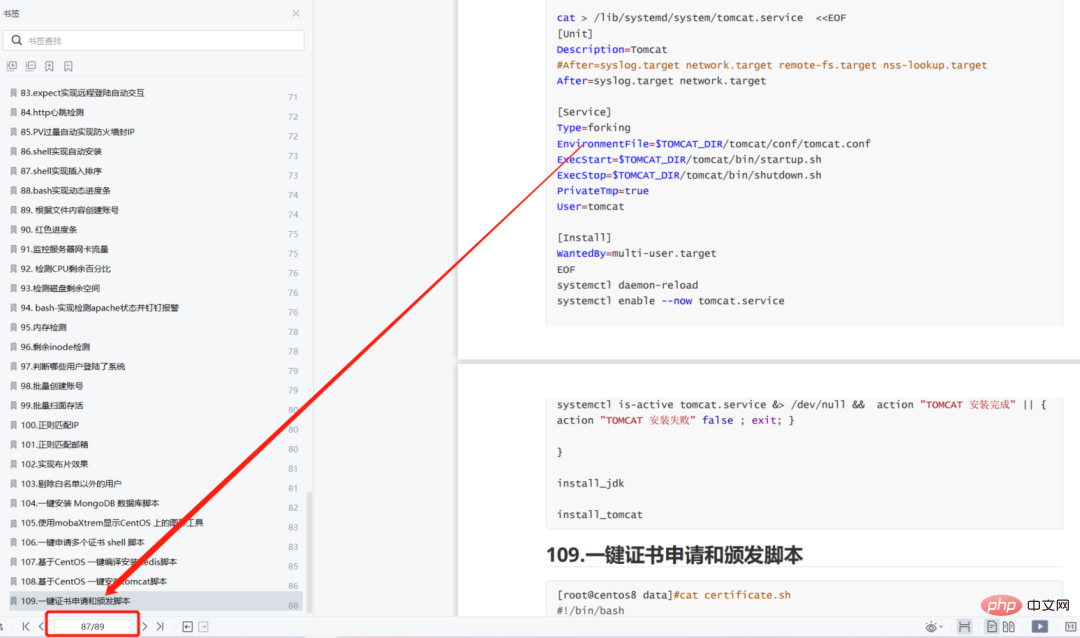
##1.Dos attack prevention (automatic blocking of attack IP)
2.Linux system sends alarm script
3.MySQL database backup single cycle
4.MySQL database backup multi-cycle
5.Nginx access log press Sky cutting
6.Nginx access log analysis script
7.View the network card in real time Traffic script
8. Server system configuration initialization script
9. Monitor 100 units Server disk utilization script
#10. Concurrently obtain hostname from several machines, record the time it takes to return information, and redirect to a file hostname.txt , after all is completed, the CPU information of the machine that takes the shortest time is output.
- #11 . Statistics on the number of Linux processes under the /proc category, output the total number of processes, the number of runninq processes, the number of stopped processes, the number of sleeping processes, and the number of zo mbie processes.
- 12. Change the suffix of all files with the suffix ".sh" in the current directory (including subdirectories) to ".shell", and then delete each The second line of the file.
- 13. Determine whether the directory /tmp/jstack exists. If it does not exist, create a new directory. If it exists, delete all contents in the directory.
- 14. Intercept all gc information logs of the day from test.loq, and count the average gc time and the longest time.
- 15. Find the top 20 IP addresses with the highest number of requests for port 80, and determine whether the smallest number of requests in the middle is greater than 500. If it is greater than 500, output the system The activity is reported to alert.txt. If not, try again after 600s until there is output.
- 16. Transfer files larger than 10K in the current directory to the /tmp directory, and then output the file names in order of file size from large to small.
- 17. Enterprise WeChat Alarm
- 18.FTP Client
- 19.SSH Client
- #21.vCenter Client
- 22. Get the domain name ssl certificate expiration time
- #23. Send today’s weather forecast and future weather Super potential graph
- 24.SVN full backup
- 25.zabbix monitoring user password Expired
- 26. Build local YUM
- 27. Back up current date file
- 28. DOS attack prevention (automatic blocking of attack IP)
- 29. How many batches are created? Create a user and set a password
- 30. Quickly set up a LAMP server and WordPress blog on Ubuntu 20.04
- ##31. Automatic backup of MySQL database every day
-
##34.Nginx log cutting as required -
35. Generate 10 random numbers and save them in an array and find their maximum and minimum values -
36. View the real-time traffic of the network card -
37. Server system configuration initialization -
38 .Create multiple users in batches and set passwords -
39. View server utilization with one click -
41. Check the real-time traffic of the network card 42. Monitor more Server disk utilization script 43. Batch check whether the website is abnormal and notify by email 44. Batch host remote execution command script 45. One-click deployment of LNMP website platform script 46. Script to monitor whether the MySQL master-slave synchronization status is abnormal 47.MySgl database backup script 48.Nginx access log analysis 49.Nginx access log automatically cuts by day (week, month) 50. Automatically publish Java projects (Tomcat)
51. Automatically publish PHP projects 52.DOS attack prevention (automatic blocking of attack IP) 53. Directory intrusion detection and alarm ##54. Local selection script auto build.sh 55. Server compilation script build.shThe first one to use is {$#}and ($@) followed by the string interception operation 56. Local expect login copy scp exec.sh script 57. Check the consistency of the files in the specified directories of the two servers 58. Clear the file content regularly and record the file size regularly 59. Detect the network card traffic and record it in the log according to the specified format ## 60. Count the number of numbers appearing in each line of the document, and calculate the total number of numbers in the entire document 61. Download the file from the FTP server 62. Enter five consecutive numbers within 100, and count the sum, minimum and maximum 63. Monitor Nginx access log 502 situation and take corresponding actions #64. Assign the results to variables 65. Batch modify file names -
66. Count the total size of files ending with html in the current directory 67. Scan the host port status 68. Enter the number to run the corresponding command 69.Expect to implement SSH interactive command execution 70.Monitor the number of httpd processes and handle accordingly 71. Modify server user passwords in batches 72.iptables automatically blocks access to website frequencies IPs that must be complicated 73. According to the web access log, block IPs with abnormal request volume. If the IP returns to normal after half an hour, the ban will be lifted 74. Determine whether the user input is an IP address 76. Poll to detect Apache Status and enable DingTalk alarm 77. One monitoring host and one monitored host. If the usage rate of the monitored host partition is greater than 80%, an alert email will be sent. Put it in crontab and execute it every 10 minutes. 78. Monitor the disk space of the host and send a warning by sending an email when the used space exceeds 90% 79. Automatic ftp upload 80.mysqlbak.sh backup database directory script 81. Print rainbow 82. Print diamond 83.expect to realize remote login automatic interaction 84.http heartbeat detection 85. Automatically implement firewall IP blocking due to excessive PV 86. ShellI implement automatic installation 87.shell implements insertion sorting ##88.bash implements dynamic progress bar 89. Create an account based on the file content 90. Red progress bar 91. Monitor server network card traffic 92. Check the remaining CPU percentage 93. Check the disk Remaining space - ##94.bash-implementation of detecting apache status and setting alarm
- 95. Memory detection
- 96. Remaining inode detection
- 97. Determine which users Logged into the system
- 98. Create accounts in batches
- 99. Batch scan to survive
- 100. Regular match IP
- 101. Regular match email
- 102. Achieve cloth patch effect
- 103. Eliminate users outside the whitelist
104. One-click installation of MongoDB database script ##105. Use mobaXtrem to display graphical tools on CentOS 106. One-click application for multiple certificate shell scripts 107. One-click compilation and installation of Redis based on CentOS Script 108. One-click installation of tomcat script based on CentOS 109. One-click installation Certificate application and issuance script
##Note: The information is compiled from the Internet and is only for free exchange and sharing , infringement and deletion
The above is the detailed content of 109 practical shell script examples, the code is clear and easy to use!. For more information, please follow other related articles on the PHP Chinese website!

Hot AI Tools

Undresser.AI Undress
AI-powered app for creating realistic nude photos

AI Clothes Remover
Online AI tool for removing clothes from photos.

Undress AI Tool
Undress images for free

Clothoff.io
AI clothes remover

AI Hentai Generator
Generate AI Hentai for free.

Hot Article

Hot Tools

Notepad++7.3.1
Easy-to-use and free code editor

SublimeText3 Chinese version
Chinese version, very easy to use

Zend Studio 13.0.1
Powerful PHP integrated development environment

Dreamweaver CS6
Visual web development tools

SublimeText3 Mac version
God-level code editing software (SublimeText3)

Hot Topics
 1378
1378
 52
52
 How to start nginx in Linux
Apr 14, 2025 pm 12:51 PM
How to start nginx in Linux
Apr 14, 2025 pm 12:51 PM
Steps to start Nginx in Linux: Check whether Nginx is installed. Use systemctl start nginx to start the Nginx service. Use systemctl enable nginx to enable automatic startup of Nginx at system startup. Use systemctl status nginx to verify that the startup is successful. Visit http://localhost in a web browser to view the default welcome page.
 How to check whether nginx is started
Apr 14, 2025 pm 01:03 PM
How to check whether nginx is started
Apr 14, 2025 pm 01:03 PM
How to confirm whether Nginx is started: 1. Use the command line: systemctl status nginx (Linux/Unix), netstat -ano | findstr 80 (Windows); 2. Check whether port 80 is open; 3. Check the Nginx startup message in the system log; 4. Use third-party tools, such as Nagios, Zabbix, and Icinga.
 How to start nginx server
Apr 14, 2025 pm 12:27 PM
How to start nginx server
Apr 14, 2025 pm 12:27 PM
Starting an Nginx server requires different steps according to different operating systems: Linux/Unix system: Install the Nginx package (for example, using apt-get or yum). Use systemctl to start an Nginx service (for example, sudo systemctl start nginx). Windows system: Download and install Windows binary files. Start Nginx using the nginx.exe executable (for example, nginx.exe -c conf\nginx.conf). No matter which operating system you use, you can access the server IP
 How to solve nginx304 error
Apr 14, 2025 pm 12:45 PM
How to solve nginx304 error
Apr 14, 2025 pm 12:45 PM
Answer to the question: 304 Not Modified error indicates that the browser has cached the latest resource version of the client request. Solution: 1. Clear the browser cache; 2. Disable the browser cache; 3. Configure Nginx to allow client cache; 4. Check file permissions; 5. Check file hash; 6. Disable CDN or reverse proxy cache; 7. Restart Nginx.
 How to check whether nginx is started?
Apr 14, 2025 pm 12:48 PM
How to check whether nginx is started?
Apr 14, 2025 pm 12:48 PM
In Linux, use the following command to check whether Nginx is started: systemctl status nginx judges based on the command output: If "Active: active (running)" is displayed, Nginx is started. If "Active: inactive (dead)" is displayed, Nginx is stopped.
 How to solve nginx403 error
Apr 14, 2025 pm 12:54 PM
How to solve nginx403 error
Apr 14, 2025 pm 12:54 PM
The server does not have permission to access the requested resource, resulting in a nginx 403 error. Solutions include: Check file permissions. Check the .htaccess configuration. Check nginx configuration. Configure SELinux permissions. Check the firewall rules. Troubleshoot other causes such as browser problems, server failures, or other possible errors.
 How to clean nginx error log
Apr 14, 2025 pm 12:21 PM
How to clean nginx error log
Apr 14, 2025 pm 12:21 PM
The error log is located in /var/log/nginx (Linux) or /usr/local/var/log/nginx (macOS). Use the command line to clean up the steps: 1. Back up the original log; 2. Create an empty file as a new log; 3. Restart the Nginx service. Automatic cleaning can also be used with third-party tools such as logrotate or configured.
 Difference between centos and ubuntu
Apr 14, 2025 pm 09:09 PM
Difference between centos and ubuntu
Apr 14, 2025 pm 09:09 PM
The key differences between CentOS and Ubuntu are: origin (CentOS originates from Red Hat, for enterprises; Ubuntu originates from Debian, for individuals), package management (CentOS uses yum, focusing on stability; Ubuntu uses apt, for high update frequency), support cycle (CentOS provides 10 years of support, Ubuntu provides 5 years of LTS support), community support (CentOS focuses on stability, Ubuntu provides a wide range of tutorials and documents), uses (CentOS is biased towards servers, Ubuntu is suitable for servers and desktops), other differences include installation simplicity (CentOS is thin)



